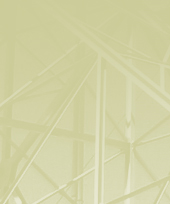|
Recent Advances in Tomographic Imaging of Ionospheric and Solar Plasmas
Dr. Farzad Kamalabadi
University of Illinois at Urbana-Champaign
Abstract
A large class of remote sensing measurements of the near-earth space environment, regardless of the specific physical process under
investigation, is of a line-of-sight integrated nature. Examples include optical emissions from airglow and aurora, total electron content between a radio transmitting
satellite and a receiver, and polarized brightness measurements of the solar corona. Theory and modeling, as well as monitoring systems, however, generally are
concerned with intrinsic volumetric variables, such as wavelength-specific photon volume emission rate or electron density. Tomography provides a unifying framework for
the estimation of such multi-dimensional parameters from their corresponding lower-dimensional observables.
Since its inception in 1988, ionospheric tomography has emerged as a major technique for imaging a variety of phenomena, enabling subsequent investigation of the
associated physical processes. Recent advances in measurement techniques have resulted in expansion to more diverse observing platforms, such as radio occultation
measurements with GPS or distributed ground- and space-based spectroscopic observations. Similar techniques are explored for three-dimensional imaging of the solar
corona from coronagraph measurements. A number of new missions have been developed (e.g., TIMED, SOHO) or are under development (e.g., C/NOFS, COSMIC, STEREO) with
tomographic capabilities. The recent experimental innovations have in turn instigated theoretical advances in linear inverse and estimation theories, particularly
those aimed at capturing the time-dependent and dynamical nature of the phenomenon being imaged. The optimality of the inversion techniques is approached either on
statistical grounds through recursive estimation and optimal filtering strategies or through deterministic vector optimization methods.
In this presentation, I will discuss recent experimental configurations and inverse-theoretical issues associated with such tomographic imaging systems. In addition, I
will illustrate relevant open questions in inverse image formation, suggest possible approaches toward their solutions, motivate proposed algorithms, and describe the
results of the associated experiments.
|


